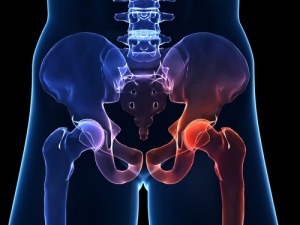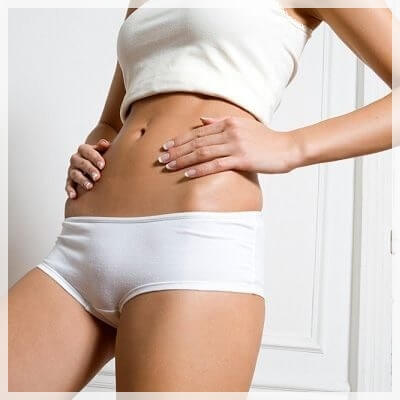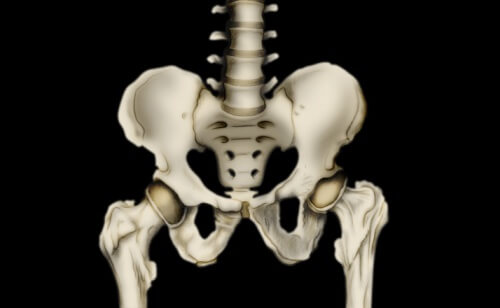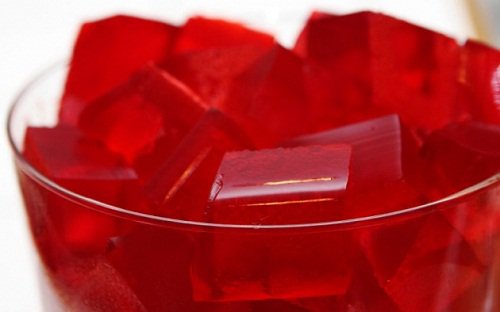Symptoms of Hip Wear and How to Prevent It

Women tend to suffer most from the painful reality of joint wear, osteoarthritis, and other muscle conditions that bring down quality of life. Hip wear is one of the most common and dangerous joint disorders out there, so it’s definitely worth taking a moment to learn about the symptoms. Let’s take a look.
What causes hip wear?

Hip wear can happen in one of two ways:
- Primary, the result of wear and tear. This usually starts around age 60 to 65.
- Secondary osteoarthritis, the result of localized problems and joint problems from dislocation or poor nutrition and bone problems. With this kind, you can start to have hip problems as early as 30 to 35 years old.
Now let’s take a look at the causes of this painful condition:
- Trauma: dislocations, injuries, or improperly healed diseases can cause you to experience hip wear.
- Vascular: vascular insufficiency is a disease that you should keep in mind. These hip problems tends to occur because of problems related to osteoarthritis or dislocations, but, in this case, the cause is vascular.
- Congenital factors: Children often come into the world with congenital problems like hip dysplasia, growth conditions, or other all kinds of other issues.
- Unbalanced skeletal structure: it’s common for people to suffer from a condition where their legs are different lengths.
Symptoms of hip wear

- Obviously, the first symptom of any arthritic problem is pain. But many people think that this pain only concentrates around the hip. In reality, it tends to occur in the groin region. It may even shoot down toward the lower part of the thigh, reaching the knee and reflecting back to the buttocks.
- Sometimes, when you move, you’ll feel a sudden cracking sensation.
- If your hip hurts, it might be a muscular problem. But if your groin area starts to hurt, that’s a direct result of hip wear.
- In the beginning, the pain won’t be very intense, and will mostly show up after you’ve been physically active. After a long walk, for example, or a run, or after lifting heavy objects. Once you rest, the pain will go away.
- Later on, as the wear advances, the pain will become more intense and it will be hard for you to do basic activities as simple as going up a set of stairs. You’ll feel that painful cracking when you cross your legs and at night when you toss and turn in bed. You’ll also feel a burning sensation in your groin area.
Read more: Incredible Natural Remedies for Joint Pain
What do you do about hip wear if you have it?

You should try to eat well so that your body will have all of the nutrients it needs and do light exercise so that you can stay mobile without wearing yourself out. Follow your doctor’s instructions, and don’t abuse anti-inflammatory medications or muscle relaxers. They can both have a negative impact on your liver in the long run.
You might be interested in: 8 Ways to Eat Healthy on a Tight Budget
What can you do to prevent hip wear?
If your goal is to prevent hip wear because the symptoms are minor and you don’t quite have this problem yet, you should follow these recommendations.
- Always keep a balanced weight.
- Do a bit of light exercise every day, especially things that don’t require you to move your hips too much. This includes things like walking, running, and swimming.
- Increase your vitamin C, A and D intake because these nutrients will help you synthesize collagen. You should definitely try to eat more citrus, mango, pineapple, carrots, melons, and strawberries, along with vegetables like cruciferous veggies, artichokes, and garlic, which is especially good at reducing joint swelling.
- Gelatin is great for restoring cartilage, because, as you know, bones can’t grow back, but cartilage can.
- Take magnesium supplements if you need to. This nutrient is fundamental to maintaining good joint health and is great for your overall health. Ask your local natural food store or doctor where you can get these supplements.
- Drink at least two liters of water per day. It’s crucial that you stay hydrated. Doing that keep your joints hydrated, which also nourishes your cartilage. You should definitely keep that point in mind.
- Some people also use vitamin supplements such as glucosamine sulfate, which is great for hip wear. It’s a natural way to strengthen this part of your body, and your bones and cartilage in general. You can talk to your doctor about its benefits.
This text is provided for informational purposes only and does not replace consultation with a professional. If in doubt, consult your specialist.








